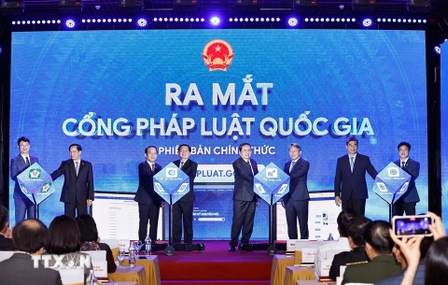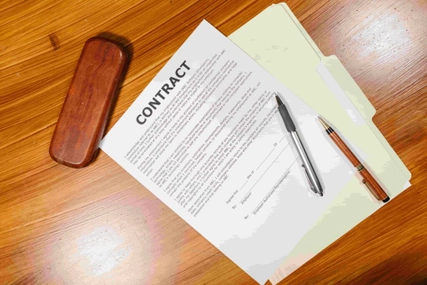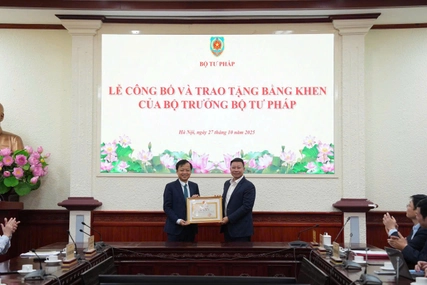On August 11, 2022, the Ministry of Finance shall issue Circular No. 50/2022/TT-BTC on compulsory insurance in construction investment activities which takes effect on October 01, 2022.
Enterprise should pay attention to some important contents in construction investment activities in the analysis of Circular No. 50/2022/TT-BTC as follows:
*Notes: The phrase “Previous regulations” which is mentioned in this analysis includes regulations prescribed in Circular No. 329/2016/TT-BTC guiding the implementation of Decree No. 119/2015/ND-CP on compulsory insurance in construction investment activities
Regulations in the Circular No. 50/2022/TT-BTC | New regulations |
| |
1. Compulsory insurance certificate in the construction investment activities (Article 4) |
| ||
1. Insurance certificate is evidence of entering into a compulsory insurance contract in construction investment activities between the insurance buyer and the insurance enterprise. 2. An insurance enterprise must separately issue an insurance certificate to the insurance buyer. The insurance certificates shall be actively designed by the insurance enterprises and contain the following information: a) Name and address of the insurance enterprise, the insurance buyer, the insured, and hotline number of the insurance enterprise. b) Name and site of the construction work. c) Insurance sum. d) Total value of the construction work (if any). dd) Number of the consultancy contract; the consultancy contract value, in which the construction survey value is separate from the construction and design consultancy value (for compulsory occupational liability insurance in construction investment activities). e) Total number of insured workers (for compulsory insurance for workers on construction sites). g) Insurance period, premium rate, premium and deduction (if any). h) Date of issuance of the insurance certificate. 3. In case of issuing e-insurance certificates, insurance enterprises must comply with the Law on E-Transactions and guiding documents. An e-insurance certificate must fully comply with current regulations and contain sufficient information prescribed in Clause 2 of this Article. | No regulations |
| |
2. Exclusion of general insurance liability (Article 5) |
| ||
An insurance enterprise is not liable to indemnify for the following losses: 1. Loss caused by war, riots, strikes and acts of hostile forces, rebellion, malicious acts on behalf of or in connection with political organizations, confiscation, expropriation, requisition, confiscation or destruction or damage caused by order of a competent state agencies. 2. Loss caused by terrorism. 3. Loss caused by nuclear reaction, nuclear radiation or radioactive contamination. 4. Loss arising from intentional violations committed by the insurance buyer or the insured (this provision does not apply to compulsory insurance for workers on construction sites in case such workers take any self-defense act or save people or assets or use stimulants under doctor’s prescriptions). 5. Loss arising in case an insurance buyer has no insurable interests as prescribed in Clause 9, Article 3 of the Law on Insurance Business. 6. Loss arising from the cessation of construction work or consequential loss of construction work (whether partial or complete cessation of construction work). 7. Loss to data, software, and computer programs. | Compared with previous regulations, the new Circular has clearly re-organized in which the insurance enterprise get the exclusion of general insurance liability and expand a number of losses as follows:
|
| |
3. Termination of insurance contracts (Article 6) |
| ||
An insurance contract shall terminate in the following cases: - The insurance buyer and insurance enterprise have agreed in the insurance contract that the insurance contract shall terminate in case the job stated in the construction contract is suspended or the construction contract terminates in accordance with law. - Other cases as prescribed by law. | If the insurance buyer refuses to fully pay the premium or fails to pay it on schedule as agreed in the insurance contract, the insurance contract shall be terminated. |
| |
4. Compulsory insurance for underway works |
| ||
4.1. The objects of insurance (Article 7) Objectives of compulsory insurance during the construction time is construction, is prescribed in Clause 1, Article 1, Decree No. 119/2015/ND-CP, and Clause 2, Article 1 of Decree No. 20/2022/ND-CP. In particulars: - Works and work items which affect the community safety, as specified in Appendix X, Decree No. 15/2021/ND-CP; - Construction investment works that greatly affect the environment and are on the list of projects subject to environmental impact assessment under the provisions specified in the Law on Environment protection and Decree No. 08/2022/ND-CP; Works with special technical requirements and complicated construction conditions as prescribed by the law on construction and relevant laws. | In previous regulations, works and work items which affect the community safety, as specified in Appendix II, Decree No. 46/2015/ND-CP |
| |
4.2. Exclusion of insurance liability (Article 8) Cases of exclusion of insurance liability for compulsory insurance for underway works include: - Exclusion of general insurance liability prescribed in Article 5 of this Circular. - Loss arising due to the consultancy contractors’ errors in design for underway works. - Loss due to corrosion, abrasion, oxidation. - Loss due to decay and occurring under normal pressure and temperature (this provision only applies to construction works specified at Point a Clause 1 Article 10 of this Circular). - Loss due to hardening such as rust, scaling and the like (this provision only applies to construction works specified at Point b Clause 1 Article 10 of this Circular). - Expenses for repairing, replacing, or correcting material defects or workmanship errors. This exclusion shall only apply to loss of directly-affected items, not apply to loss of other items that is an indirect consequence due to material defects or workmanship errors. - Loss or damage only detected at the time of inventory. | Supplements of the cases: - Expenses for repairing, replacing, or correcting material defects or workmanship errors (only apply to loss of directly-affected items, not apply to loss of other items that is an indirect consequence due to material defects or workmanship errors). - Loss or damage only detected at the time of inventory. |
| |
4.3. Insurance premium (Article 10) The premium of compulsory insurance for an underway work shall be determined as follows:
| The insured work is valued from VND 700 billion to VND 1000 billion. |
| |
4.4. The payment of construction investment (Article 10) The payment of construction investment consultancy professional liability insurance premium shall comply with Circular No. 50/2017/TT-BTC. Accordingly, the final installment shall be paid at least 30 days before the expiry date of the insurance period. Subsequent installments shall be agreed upon by the insurance enterprise and insurance buyer and the insurance payer in accordance with the first contract. Insurance enterprises and insurance buyers shall reach an agreement on time limits for premium payments which are not later than the payment schedule of the construction contracts and include them in the insurance contracts. In many cases, the date of premium payment must not be beyond the insurance period under the insurance contracts. | No regulations on the term of final payment (before 15 days before the expiry date of the insurance period), provided that the agreement between insurance enterprises and insurance buyers does not exceed the insurance term limit. |
| |
4.5. Liability to buy insurance (Article 11) A project owner or contractor (in casework insurance premiums are already included in contractual prices) shall buy insurance for the whole work or for each work item during the construction period. | A project owner or contractor (in casework insurance premiums are already included in contractual prices) shall buy insurance with the insurance sum for each work |
| |
4.6. Indemnification dossier (Article 13) 1. The insurance buyer’s written claim. [...] | The insurance buyer’s written claim is required instead of a notice of an incident occurring a work and the insurance buyer’s written claim in accordance with the form prescribed in Appendix 10, Circular 329/2016/TT-BTC. |
| |
A number of other papers in the compulsory indemnification dossier during construction time are the same as previous regulations. See details in Article 3 of this Circular. |
| ||
5. Compulsory insurance for construction investment consultancy professional liability |
| ||
5.1. Exclusion of insurance liability (Article 15) Cases of exclusion of insurance liability for compulsory insurance for construction investment consultancy professional liability include: - Exclusion of general insurance liability prescribed in Article 5 of this Circular. - Loss arising from consultancy contractors’ intentional selection of untested methods of construction, measurement, calculation and design, and use of untested materials. - Expenses for redesigning or correcting drawings, plans, technical manuals, or catalogs of technical documentation. - Loss caused by mold. - Loss caused by construction survey and design advice that leads to environmental pollution or contamination and affects a third party. - Loss related to the use of asbestos or any materials containing asbestos. - Loss arising from the infringement of the intellectual property right. | Supplement the cases of exclusion of insurance liability: - Expenses for redesigning or correcting drawings, plans, technical manuals or catalogs of technical documentation. - Loss caused by mold. - Loss arising from the infringement of the intellectual property right. |
| |
5.2. Liability to buy insurance (Article 18) The consultancy contractors are obliged to buy the compulsory professional liability insurance for construction consultants when performing consultancy jobs. | In previous regulations, consultancy contractors are obliged to buy compulsory professional liability insurance for construction consultants when performing consultancy jobs. |
| |
5.3. Indemnification dossier (Article 20) An indemnification dossier for compulsory professional insurance liability for construction consultants must comprise: 1. The insurance buyer’s written claim. | Replace the third party’s written claim and insurance buyer’s written claim in accordance with the form prescribed in Appendix 10, Circular No. 329/2016/TT-BTC with the written claim of the insurance buyer |
| |
A number of other papers in the compulsory indemnification dossier during construction time is the same as previous regulations. See details in Article 20 of this Circular. |
| ||
6. Compulsory insurance for workers on construction sites |
| ||
6.1. Liability to buy insurance (Article 25) A construction contractor is obliged to buy compulsory insurance for workers on construction sites when the workers perform their jobs on construction sites. | In previous regulations, a construction contractor is obliged to buy compulsory insurance before the workers perform their jobs on construction sites. |
| |
6.2. Indemnification dossier (Article 27) An indemnification dossier for a worker on a construction site must comprise: 1. The insurance buyer’s written claim. [...] | To replace the notification of occupational accidents and insurance buyer’s written claim in accordance with the form prescribed in Appendix 11 of Circular No. 329/2016/TT-BTC by the insurance buyer’s written claim. |
| |
A number of other papers in the compulsory indemnification dossier for the workers in the work site is the same as previous regulations. See details in Article 27 of this Circular. |
| ||
7. Compulsory civil liability insurance for the third party |
| ||
7.1. The minimum premium of compulsory civil liability insurance (Article 28) The minimum premium of compulsory civil liability insurance for third party shall comply with Clause 7 Article 1 of Decree No. 20/2022/ND-CP. Accordingly: - The minimum indemnity for damage to health or life is VND 100 million (one hundred million Vietnam dong), per person per case and with no limitation on the number of cases. - The minimum indemnity for property damage and relevant legal expenses (if any) shall be determined as follows: + For works valued at under VND 1 trillion (one trillion Vietnam dong), the minimum indemnity for property damage and relevant legal expenses (if any) equals to 10% of the value of works for the entire insurance duration and with no limitation on the number of cases. + For works valued at VND 1 trillion (one trillion Vietnam dong) or higher, the minimum indemnity for property damage and relevant legal expenses (if any) is VND 100 billion (one hundred billion Vietnam dong) for the entire insurance duration and with no limitation on the number of cases. | No regulations |
| |
7.2. Exclusion of insurance liability (Article 29) Cases of exclusion of insurance liability for compulsory civil liability insurance for the third parties include: - Exclusion of general insurance liability prescribed in Article 5 of this Circular. - Loss arising from environmental pollution or contamination. This exclusion does not apply to damage to health, life, and property arising from environmental pollution or contamination, or unforeseen risks. - Damage to property on the ground or to health or life caused by displacement or weakening of load-bearing parts and structural geology. - Damage is the result of an accident caused by a motor vehicle or a vessel, barge, or aircraft covered by the vehicle owner’s civil liability insurance against a third party. - Liability is a result of injury or illness caused to workers of the project owner or contractor in connection with the insured work. - Loss or damage to property owned or under the lawful management and use of the project owner or contractor or the worker of one of the above persons. - Loss related to the use of asbestos or any materials containing asbestos. | No regulations |
| |
7.3. Insurance period (Article 30) | No regulations |
| |
7.4. Liability to buy insurance (Article 32) | No regulations |
| |
7.5. Principles of indemnification (Article 33) 1. When a third party suffers an out-of-contract damage to health, life, or property directly arising during the construction process within the insurance responsibility, the insurer will be responsible for paying the insurance buyer according to the following compensation levels: a) The specific level of compensation for health and life shall be determined according to each type of injury according to the Table of payment of compensation for damage to health and life as prescribed in Appendix V to this Circular or according to the agreement (if any) between the insured and the damage sufferer or the heirs of the damage sufferer (in case the damage sufferer is dead) or the representative of the damage sufferer (in case the damage suffer loses his/her civil act capacity under a court decision or is under six years old) but must not exceed the compensation level specified in Appendix V to this Circular. In case the court decision is available, the compensation level shall be determined based on the court decision but must not exceed the one specified in Appendix V to this Circular. b) The specific level of compensation for property/an accident shall be determined according to the actual damage and fault level, but must not exceed the level of insurance liability as agreed in the insurance contract. c) Relevant legal costs (if any). 2. Upon receiving a third party’s claim, the insurance buyer and insurance enterprise shall coordinate with each other in the settlement of the such claim as follows: a) The insurance buyer shall: b) The insurance enterprise shall: | No regulations |
| |
7.6. Indemnification dossier (Article 34) An indemnification dossier for compulsory civil liability insurance for the third parties must comprise: 1. The insurance buyer’s written claim. 2. Documents relating to the insured object, including Insurance contracts, insurance certificates 3. The third party’s written claim against the insured. 4. Documents proving damage to health and life of the third party (copies certified by a health establishment, or by the insurance enterprise after comparing with the originals) provided by the insurance buyer and the insured. Depending on the extent of injury, one or some of the following documents is/are required: a) Injury certificate. b) Hospital discharge paper. c) Documents certifying surgery. d) Medical records. dd) Death certificate extract or death certificate or written certification of a public security agency or examination result of forensic examination agency. 5. Documents proving loss of or damage to property, including: a) Construction incident records (notarized copies or copies made by the party making such records) as prescribed in Article 47 of Decree No. 06/2021/ND-CP (if any). b) Valid invoices and documents in case of property repair or replacement. 6. A written record of assessment of causes and extent of loss, prepared by the insurance enterprise or its authorized person. 7. Other relevant documents (if any). | No regulations |
| |
| |||
This is the analysis of Circular No. 50/2022/TT-BTC which takes effect on October 01, 2022. Besides, this Circular also has other changes.










